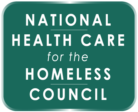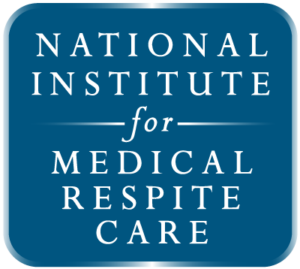Frequently Asked Questions
The Federal government uses multiple definitions of homelessness according to its different agencies. The Department of Housing & Urban Development, which is principally responsible for programs addressing homelessness through the Continuum of Care program, uses a comparatively narrow though complex definition of homelessness. Since this is employed for the annual Point-in-Time Count, which is widely cited as the official estimate of homelessness in the United States, the HUD definition is arguably the most authoritative. (Read more about the problems with the PIT Count.)
The National HCH Council’s primary constituency includes HRSA-supported Health Centers, which operate under the U.S. Department of Health and Human Services’ (HHS) definition, which can be summarized as a person “who lacks housing” according to section 330(h)(5)(A) of the Public Health Service Act.
Crucially, as the archived HRSA resource known as PAL 99-12 noted, “a recognition of the instability of an individual’s living arrangements is critical to the definition of homelessness.” More recent HRSA resources that define homelessness include page 89 of the HRSA Health Center Program Compliance Manual and the reporting instructions for homeless patients starting on page 41 of the UDS Manual.
Yes, there are groups of people who experience homelessness in different ways, but all homelessness is characterized by extreme poverty coupled with a lack of stable housing.
Children on their own or with their families, single adults, seniors, LGBTQ+ people, people of color, and veterans compose various demographic groups that may use different types of programs or services or have differing factors contributing to their homelessness.
There are also those who experience homelessness for various lengths of time (short-term, long-term, or “chronic”) or who experience multiple episodes of homelessness (refer to the previous FAQ regarding the definition of homelessness).
Those who are “doubled-up” or “couch surfing” may also be considered homeless for eligibility for different services. While demographic differences or varying lengths in the experience of homelessness often provide important background for service providers (both to adapt their practice and to help enroll them in specialized programs), there is a danger in focusing on subpopulations in that resources are reserved until people become the most desperate, creating a “race to the bottom.”
Nothing but stable housing fundamentally differentiates those who experience homelessness and those who don’t, and all people deserve the human right to housing.
The Health Care for the Homeless (HCH) Program started in 1985 through 19 demonstration projects funded by the Robert Wood Johnson Foundation and the Pew Memorial Trust. These initial projects intended to determine if a specialized model of delivering services could improve the health of individuals experiencing homelessness. Federal funding for more projects began in 1987 through the Stewart B. McKinney Homeless Assistance Act.
In 1996, HCH programs were consolidated with community health centers and other primary care programs administered by HRSA’s Bureau of Primary Health Care. By law, HCH grantees receive 8.7% of appropriated health center funds.
There are now roughly 300 HCH-funded health centers nationally—at least one in every state, the District of Columbia, and Puerto Rico—nearly 60 receive only the HCH grant from HRSA.
Learn more about the history of the HCH Program in the 2016 publication Health Care for the Homeless: A Vision of Health Care for All. See a fact sheet about the HCH program.
Like other health centers, HCH programs are community-based and patient-directed organizations that serve low-income populations with limited healthcare access. Each is located in a medically underserved community, is a nonprofit organization or public entity governed by a community board, and provides comprehensive primary care and supportive services (education, translation, transportation, etc.) that promote access to health care.
All services are provided on a sliding scale with fees adjusted based on income and the ability to pay, and no patient may be turned away due to inability to pay. Unlike other health centers, HCH programs are required to provide substance use disorder treatment services.
Poor health (illness, injury, and/or disability) can cause homelessness when people have insufficient income to afford housing. This may be the result of being unable to work or becoming bankrupted by medical bills.
Living on the street or in homeless shelters exacerbates existing health problems and causes new ones. Chronic diseases, such as hypertension, asthma, diabetes, mental health problems and other ongoing conditions, are difficult to manage under stressful circumstances and may worsen. Acute problems such as infections, injuries, and pneumonia are difficult to heal when there is no place to rest and recuperate.
Living on the street or in shelters also brings the risk of communicable disease (such as STDs or TB) and violence (physical, sexual, and mental) because of crowded living conditions and the lack of privacy or security. Medications to manage health conditions are often stolen, lost, or compromised due to rain, heat, or other factors.
When people have stable housing, they no longer need to prioritize finding a place to sleep each night and can spend more time managing their health, making time for doctors’ appointments, and adhering to medical advice and directions. Housing also decreases the risk associated with further disease and violence.
In many ways, housing itself can be considered a form of health care because it prevents new conditions from developing and existing conditions from worsening. Learn more in Homelessness & Health: What’s the Connection?
In 2017, the nation’s 1,373 community health centers treated 1,361,675 patients experiencing homelessness altogether, up from 1,262,961 in 2016.
The 300-some HCH-funded health centers served 70% of these patients (949,818). Notably, this is nearly double the “official” estimate from the annual Point-in-Time count.
Low-income individuals can obtain health services at any health center in their community, which, in principle, cannot turn anyone away for inability to pay.
Find the nearest health center through this interactive search tool, or find HCH-specific clinics in our online directory. In many communities, simply dialing 2-1-1 on the phone will reach social services.
HRSA allows two opportunities to become a health center grantee: the New Access Point (NAP) and the Service Area Competition (SAC). NAPs are seldom released with advanced notice, and HRSA has made NAPs available just twice in the last several years. SACs allow prospective health centers to compete for the grant of existing health centers. The best method of keeping abreast of SAC and NAP opportunities is to subscribe to the BPHC mailing list.
If funding becomes available, the Council can help with the application process. Contact us at www.nhchc.org/ta.
Yes, Health Care for the Homeless programs (and health centers in general) provides a wide range of primary care and other services to children and youth experiencing homelessness. While youth of any age can be served at HCH clinics, laws vary state-by-state about the types of services that youth can receive without parental consent. For minors who are not together with their family, parental consent can be a challenge to obtain.
In these circumstances, providers will do everything they can to find the appropriate person who will consent to care. Students experiencing homelessness should contact their school’s McKinney-Vento point-of-contact to get connected to specialized services. You may also learn more from the National Network for Youth.
Returning veterans who are experiencing homelessness can be connected to the Health Care for Homeless Veterans Program, a separate program administered by the Department of Veterans Affairs (VA). There is a coordinator for this program at each VA medical center who can assist veterans in accessing housing and supportive services. More information on these services is available here.
Veterans can also access health services at any health center. In fact, nearly 330,271 veterans received care at health centers in 2017.
Otherwise known as recuperative care, Medical Respite Care is acute and post-acute medical care for homeless persons who are too ill or frail to recover from a physical illness or injury on the streets but are not ill enough to be in a hospital.
It is a critical (though still emerging) program in communities’ efforts to end homelessness for the most vulnerable in that it meets the needs of hospitals to provide safe discharge for their patients, and it allows clients time to stabilize and be connected to housing and support services, avoiding worsening health and increased costs to the service system.
Medical Respite Care is the single most recurring theme in our Technical Assistance work and a priority in our new strategic plan. Our Respite Care Providers’ Network has developed the first-ever national standards for medical respite care, dozens of resources for prospective and new programs, a directory of existing programs, and dedicated staff for technical assistance on this topic. Please review our materials and contact us to receive support.

